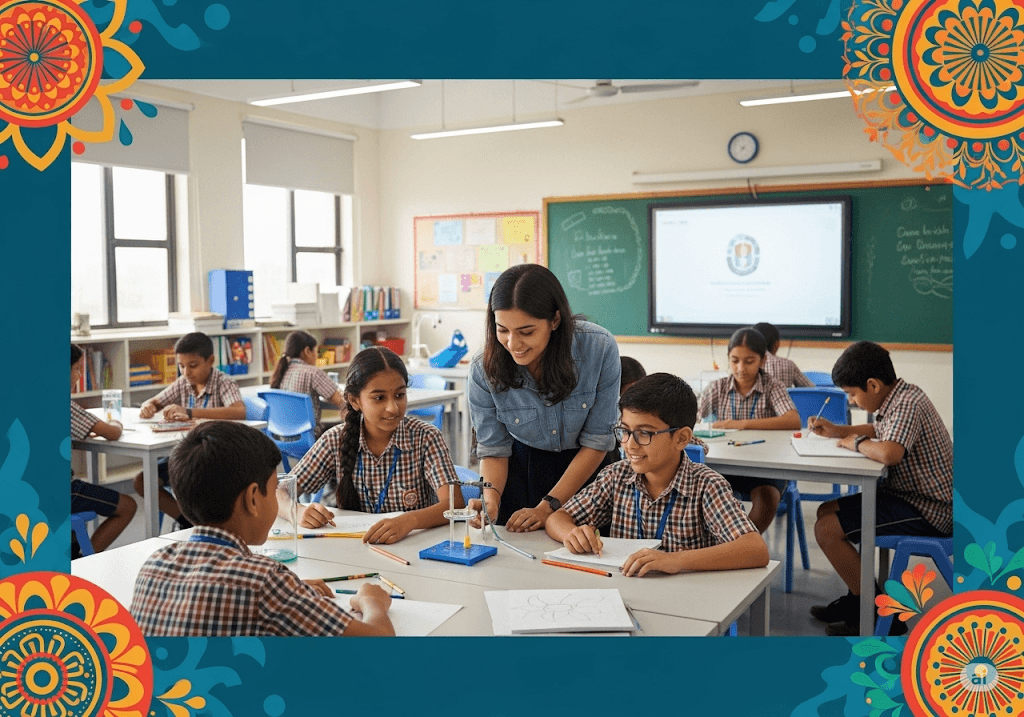Progressive Schools in India: How They're Shaping the New-Age Learner
In a rapidly changing world, education must evolve to meet the needs of the future. Progressive schools in India are doing just that transforming traditional classrooms into dynamic learning hubs that shape curious, adaptable, and thoughtful learners. With a focus on holistic development, innovation, and student-led exploration, these institutions are leading the shift toward a more meaningful education.
Here’s how progressive education schools are redefining what it means to learn in India today:
1. Student-Centered Learning at the Core
Every child learns differently, and progressive schools in India recognize this.
Lessons are tailored to suit individual learning styles, interests, and pace.
Teachers act as facilitators rather than information providers, encouraging self-directed learning and autonomy.
2. Emphasis on Experiential and Project-Based Learning
Learning goes beyond textbooks. Students engage in real-world projects, research, and collaborative tasks.
This hands-on approach builds problem-solving skills, critical thinking, and creativity.
It aligns with the progressive education curriculum in India, which promotes learning by doing.
3. Technology as a Learning Enabler
Top CBSE schools in India adopting progressive models use digital tools to personalize and enhance learning experiences.
Interactive apps, virtual labs, AI tutors, and smart classrooms are now integral to the learning environment.
Students become digitally literate while mastering core subjects in a tech-enabled format.
4. Strong Focus on Social-Emotional Learning (SEL)
SEL programs nurture emotional intelligence, empathy, and resilience.
Students learn to manage stress, build positive relationships, and resolve conflicts.
This focus ensures that learners are not just academically successful, but emotionally well-adjusted keys for holistic development.
5. Interdisciplinary and Integrated Curriculum
Progressive education blurs rigid subject boundaries, fostering a more integrated understanding of knowledge.
For example, a sustainability project might combine science, art, social studies, and language skills.
This interdisciplinary approach reflects how the real world works complex, connected, and ever-changing.
6. Community-Driven Learning
Families, educators, and local communities play an active role in a student’s learning journey.
Many preparatory schools partner with local organizations for fieldwork, internships, and social service projects.
Students gain perspective, empathy, and a strong sense of responsibility.
7. Embracing Holistic Development Over Exam Pressure
Instead of rote memorization, students are evaluated through presentations, portfolios, and peer feedback.
Co-curriculars like music, sports, mindfulness, and art are not extras; they're essential.
The best progressive schools in India focus on nurturing both the mind and the spirit, helping students thrive in all aspects of life.
Why Progressive Education Matters Today
Traditional education often focuses on grades, competition, and standardization. In contrast, progressive education schools champion flexibility, curiosity, and purpose. In today’s world where adaptability, collaboration, and innovation matter more than ever this shift is not optional; it’s essential.
Progressive schools in India are preparing students not just to pass exams, but to solve problems, lead change, and shape the future.
FAQs About Progressive Schools in India
Q1. What role does AI play in progressive education today?
AI helps personalize learning by tracking performance and suggesting tailored activities. It makes it easier for teachers to focus on higher-order skills while ensuring no child is left behind.
Q2. How are teachers supported in progressive schools?
Progressive schools prioritize teacher growth with regular training in inquiry-based methods, SEL, tech tools, and inclusive practices. Teachers are collaborators in innovation, not followers of rigid plans.
Q3. Do progressive schools in India include environmental education?
Yes. Environmental themes are deeply embedded into both curriculum and co-curriculars. Students actively participate in green initiatives like composting, energy audits, and sustainability campaigns.
Q4. How are students assessed in progressive education schools?
Assessment is ongoing and multi-dimensional. Tools include portfolios, peer reviews, reflective journals, and narrative feedback designed to promote growth rather than comparison.
Q5. What is meant by holistic development in this context?
It means nurturing every aspect of a child mentally, emotionally, socially, creative, and physical. It’s about building a complete individual, not just a good test-taker.
Q6. Are parents involved in the learning process?
Absolutely. Parents often participate in school events, projects, and even workshops, making them active partners in their child's education.
Q7. How is cultural diversity respected in these schools?
Progressive schools celebrate India’s diversity through inclusive curriculums, festivals, language programs, and values education, ensuring students grow up with both rootedness and openness.
Final Thoughts
Progressive education in India isn’t about abandoning the past, it's about evolving with purpose. With a strong focus on personalized learning, emotional intelligence, sustainability, and community, progressive schools in India are giving rise to a generation that’s not just smart but wise.
Whether you’re a parent, educator, or policymaker, one thing is clear: the future belongs to those who learn how to learn and progressive schools are where that journey begins.
One such initiative is the Sri Sri Awards for Holistic Education, which honors schools and educators championing progressive learning philosophies.
Explore how schools are being recognized for excellence in progressive education:

